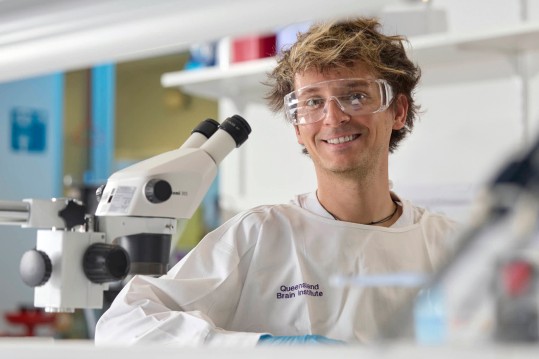Dr. Marcin Kielar -MOLTECH-Anjou, France
The March 20, 2025
 Recently recruited to the position of Junior Professor Chair at MOLTECH-Anjou, Marcin Kielar will present his research activities on Thursday, March 20, 2025, at 10:30 AM in amphitheater L001 during a conference entitled:
Recently recruited to the position of Junior Professor Chair at MOLTECH-Anjou, Marcin Kielar will present his research activities on Thursday, March 20, 2025, at 10:30 AM in amphitheater L001 during a conference entitled:
Brilliant brain cells and how to detect and excite them with organic photodetectors and OLEDs.
Abstract
Mapping brain cells (neurons) in the brain is important to understand the neuronal circuits involved in cognitive function such as learning and memory formation. More importantly, understanding their impairment in neurological disorders and diseases could benefit patients waiting for better therapy. To this aim, optogenetic tools, allowing the use of light to control neuronal activity, and ultimately behaviour, have been revolutionizing the field of neuroscience over the last 20 years. Current optogenetic approaches to understand brain function involve the use of commercially available lasers and LEDs coupled to large implants, optical fibres or camera systems. Their use is usually associated with high cost, invasiveness and low spatial resolution. To address these limitations, organic electronics devices have been emerging as the perfect candidate for biocompatible, fMRI-compatible, small-footprint, high-resolution neural probes. In our own contribution to the field, we have demonstrated the successful detection of neuronal activity using organic photodetectors (OPDs) based on rubrene, as well as optogenetic stimulation of neurons using OLEDs based on Super Yellow. We have also developed a novel methodology to detect ultra-dim light from neurons as well as a reliable prediction model to localise brain cells with high accuracy. Taken together, the use of highly efficient, stable organic optoelectronic devices has eliminated the need for camera systems, optical fibres and microscope lenses, reflecting a tremendous potential of this technology in neuroscience applications.


